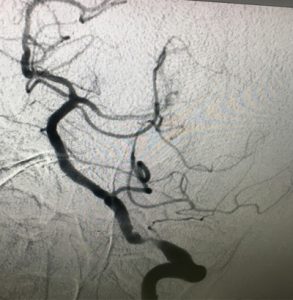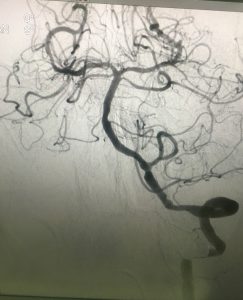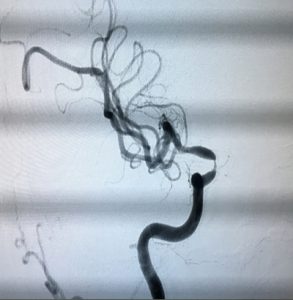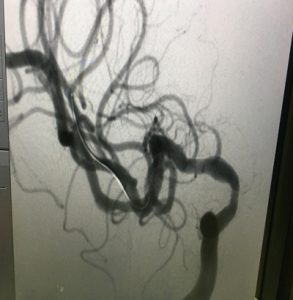INTRACRANIAL ATHEROSCLEROSIS ( STENOSIS)
- Intracranial Atherosclerosis
- Case Studies
- Videos
- Testimonials
Atherosclerosis in major intracranial arteries leads to changes ranging from minor wall thickening to hemodynamically
significant luminal stenosis and is one of the most common causes of stroke 20 % worldwide & is highly prevalent in Asian & Chinese population.
There are several possible mechanisms of ischemic stroke in ICAD: artery–artery embolism, hypoperfusion, and branch
atheromatous disease.
Antiplatelets , high dose statins & control of risk factors with life style modification is the mainstay treatment of ICAD.
It has usually been used when patients with >70% stenosis have ischemic events despite being on aggressive medical treatment.
INTRACRANIAL ATHEROSCLEROSIS ( STENOSIS)
1) Pt with recurrent paralysis not responding to medical treatment
68 / Male pt presented with history of recurrent episodes of giddiness with imbalance & slurred speech since 3 months
K/C/O HTN , DM IHD- Post CABG Status. In spite of the best medical treatment, he had recurrent symptoms. His MRI Brain showed multiple infarcts in the posterior circulation. After stenting of the intracranial vertebral artery, there was no recurrence of stroke.
2) Pt with recurrent left sided paralysis not responding to medical treatment
65 year old lady presented with recurrent left sided weakness.She was known hypertensive, diabetic & taking regular treatment. Inspite of best medical treatment she had recurrent paralysis. Angiography showed severe >90 % stenosis of rt intracranial supraclinoid ICA .Post stenting there were no recurrent symptoms.







